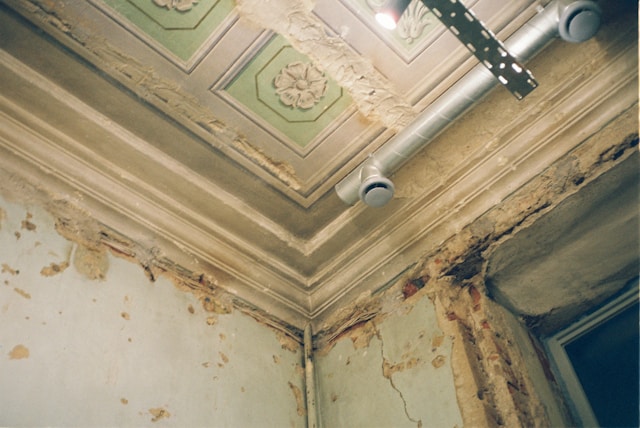My Long Island Mold Removal: A Comprehensive Look at Mold Remediation Excellence in Cedarhurst, NY
July 28, 2025
Mold may start as a small blotch in a damp corner, but when ignored, it can escalate into a health hazard and structural threat. Fortunately, businesses like My Long Island Mold Removal exist to tackle this invisible enemy head-on, bringing expertise, professionalism, and reliability to homeowners and commercial property owners across Nassau and Suffolk Counties.  Located at 311 Linwood Ave, Cedarhurst, NY, this company is deeply embedded in the Long Island community, providing vital services that ensure clean, breathable indoor air and structurally sound living environments. Business Profile: Who They Are and What They DoMy Long Island Mold Removal operates under the DBA (doing business as) name Long Island Mold Removal & Remediation, a brand built on years of dedicated service. Their team handles a variety of environmental and structural concerns including:
With their reputation for affordability, reliability, and fast response times, they have become a go-to solution for both residential and commercial properties. Their website, moldremovalserviceslongislandny.com, offers insight into their methods, service areas, and customer testimonials, further cementing their role as local leaders in mold abatement. Mold Challenges on Long Island: A Regional PerspectiveCedarhurst, a village in Nassau County’s “Five Towns,” is home to nearly 7,400 residents and lies in a region known for its humid summers and occasional coastal storms. These environmental conditions, paired with aging infrastructure in many buildings, create a perfect storm for mold growth. Water intrusion from rain, plumbing leaks, or high humidity can lead to mold colonization in attics, crawlspaces, basements, and HVAC systems. As such, mold remediation companies are in high demand—ranging from large corporate operations to family-owned businesses like My Long Island Mold Removal. Their localized knowledge of Long Island’s environmental dynamics gives them an edge in identifying and addressing region-specific mold causes. Key Entities and Their Interactions in the Mold IndustryTo fully understand the mold remediation process, it’s important to identify the main entities involved and how they interact:
What Causes Mold in Long Island Homes?Long Island’s climate and construction styles make some buildings particularly vulnerable to mold. Common contributing factors include:
Understanding these root causes is vital to long-term mold prevention, which is why education plays a big role in how My Long Island Mold Removal serves its clients. Best Practices: A Detailed Look at the Remediation WorkflowEffective mold remediation is never a one-step process. Below is a breakdown of a standard workflow that My Long Island Mold Removal likely follows: 1. Initial Inspection & ConsultationAn expert visits the property to conduct a visual inspection and listen to the client’s concerns. Based on this initial visit, they schedule mold testing if necessary. 2. Testing PhaseAir and surface samples are collected to identify mold types and concentrations. This diagnostic step helps in crafting a tailored remediation plan. 3. Assessment & QuotationAfter analyzing the test results, the company provides a detailed remediation strategy, including a written estimate for costs, timelines, and expected outcomes. 4. Containment & Mold RemovalTo prevent cross-contamination, affected areas are sealed off. Technicians use HEPA filtration units to clean the air while physically removing mold-damaged materials like drywall and insulation. 5. Cleaning & Air Duct ServiceRemaining surfaces are scrubbed, and HVAC systems are cleaned to prevent re-spread. Industrial-grade sanitizers and deodorizers may be used to restore indoor air quality. 6. Repairs & RestorationAny removed structures—such as walls, ceilings, or floors—are rebuilt to pre-mold condition. The goal is not only cleanliness but also restoring structural integrity. 7. Clearance Testing & Follow-UpPost-remediation testing is conducted to ensure the job was successful. Clients are also educated on how to prevent mold recurrence, with recommendations for dehumidifiers, repairs, or maintenance plans. What Sets My Long Island Mold Removal Apart?In a competitive market like Long Island, standing out requires more than just basic service offerings. Here are some of the unique value propositions:
Growth Opportunities for My Long Island Mold RemovalWhile the business already excels in its core offerings, there are several strategies it could explore to expand its reach and enhance its impact:
Customer Impact: Health and LifestyleUltimately, mold remediation is about more than aesthetics—it’s about health. Mold exposure can cause chronic issues like:
Clients of My Long Island Mold Removal often express relief not only in the physical changes in their homes but in their improved health and peace of mind. Benchmarking Against Local CompetitorsOther mold remediation companies in Long Island include names like Clean-Up Kings, Five Towns Mold Removal, and Green Island Group. Many of them offer similar services but often differ in:
My Long Island Mold Removal’s strength lies in its community trust, tailored solutions, and hands-on owner involvement—a rarity among larger franchises. ConclusionMy Long Island Mold Removal is not just a service provider; it’s a partner in ensuring healthy living environments across Nassau and Suffolk Counties. With a methodical approach to mold detection, removal, and prevention, this Cedarhurst-based business continues to make a tangible impact on homes and families. In a region where humidity and aging infrastructure make mold a frequent concern, their commitment to high standards, advanced tools, and customer education is a welcome beacon. Whether you’re facing a small patch of mold or a full-scale infestation, this company stands ready to respond—with professionalism, precision, and peace of mind. |
|